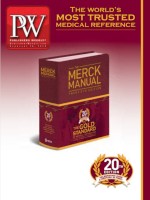The first known cookbook written by an American is American Cookery by Amelia Simmons, published in Connecticut in 1796. It offers a window onto the 18th-century American diet (pan-cooked eel, anyone?) and the culinary techniques that prevailed then (“About 9 o’clock hang up your turtle by the hind fins, cut [off] the head and save the blood”). It also demonstrates how cookbooks have changed in the intervening centuries. Notably, American Cookery contains zero images. Today, a cookbook that doesn’t appeal first to the eye is almost unthinkable.
The contemporary cookbook is a predominantly visual affair, vying with Instagram and untold well-produced food blogs for readers’ attention. But high-quality photographs aren’t the only route to an attractive cookbook. Editors, art directors, and designers make decisions on a case-by-case basis, determining which visual approach—photos, illustrations, infographics, alluringly typeset text—will best communicate each book’s sensibility. In fact, perhaps because cookbooks are no longer the only source for top-notch food photography, illustration seems to be on the rise.
In 2017, Simon & Schuster published Salt, Fat, Acid, Heat, which drew praise not only for chef Samin Nosrat’s technical instruction but also for Wendy MacNaughton’s watercolor illustrations and graphics. The book has sold more than 99,000 copies in hardcover and was on the vanguard of an illustration boomlet, as evidenced by titles such as The Paris Picnic Club by Shaheen Peerbhai and Jennie Levitt (Sterling, Apr.). and Lemons Are a Girl’s Best Friend (Mar.), a rare illustrated title from Clarkson Potter.
Yet, even as illustration is having a moment, photography continues to dominate. Stephanie Huntwork, art director at Clarkson Potter, says the publisher typically prefers photography because it’s “the most effective way to show food to people who want to cook.”
Renata De Oliveira, senior designer at HarperCollins, works on many of the publisher’s cookbooks, among them the forthcoming Feast by Anissa Helou (Ecco, June). “As a cookbook user myself, I find it a much more rewarding experience if I see a photo of the final recipe I’m trying to make in my own kitchen,” she says. “You want to see what the final product is supposed to look like.”
Photography does come with challenges, among them the fact that photographs, perhaps more so than illustrations, can become dated. De Oliveira prefers natural light and minimalist arrangements: over-the-top props and excessively rich visuals, she says, may fail to stand the test of time. Huntwork adds that, though there are certain trends in food photography right now—high contrasts, sharp shadows, tattooed forearms in the frame—the best way to make cookbooks feel visually fresh is to approach each as its own “unique journey,” using images that feel appropriate to the author’s voice and subject.
It’s something to keep in mind when perusing the season’s cookbooks. Even as forthcoming titles hint at various visual trends—illustrations, infographics, photography from diverse regions—each book’s look, ultimately, is driven by its author’s singular perspective.
Below, more on the subject of cookbooks.
Designer Tastes: Cookbooks 2018
One of the foremost purposes of cookbooks visuals is to educate the reader. To the rescue: photos and infographics.
Cooks, Illustrated: Cookbooks 2018
Illustration offers charm and intimacy, and can reassure the home cook that a finished dish doesn’t have to look perfect.
Postcards from the Kitchen: Cookbooks 2018
Cookbooks that showcase international and regional cuisines also act as cultural guides.
‘The China Study Cookbook’ Makeover: Cookbooks 2018
To compete in an increasingly image-driven cookbook market, BenBella has updated the look of a 2013 title.
Daniel Lefferts is a writer in New York City.



 Volume 265
Issue 9
02/26/2018
Volume 265
Issue 9
02/26/2018





